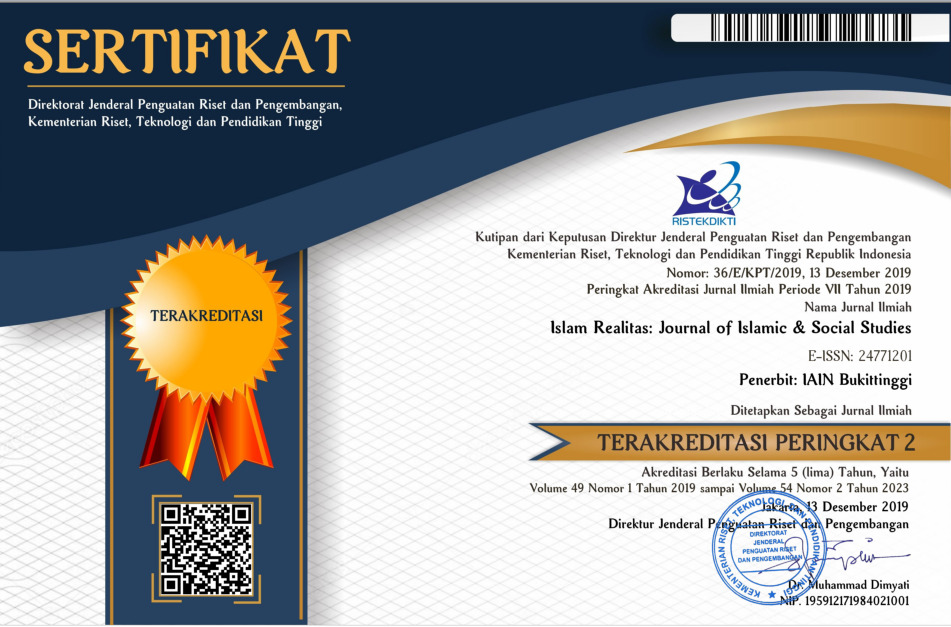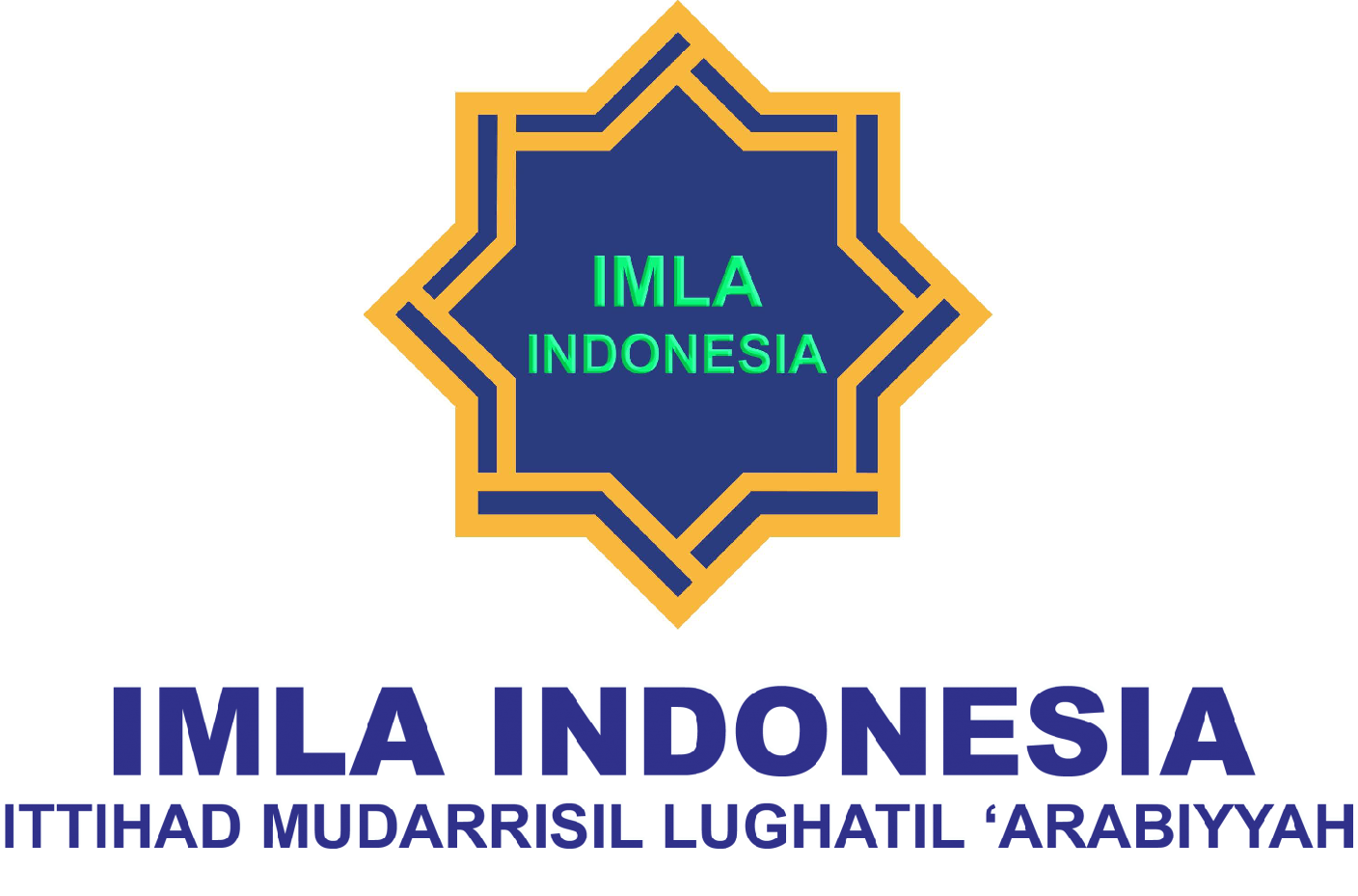Taḥlīl Akhṭāʾ al-Kalām al-ʿArabīy li-Ṭullāb al-Ṣaff al-Ḥādī ʿAshar bi al-Madrasah al-Thānawīyyah al-Islāmiyyah al-Ḥukūmiyyah Simalungun
DOI:
https://doi.org/10.30983/huruf.v5i1.9357Keywords:
Arabic Speech, Phonetic, Morphological and Grammatical ErrorsAbstract
This research aims to analyze the types of Arabic speaking errors made by 11th-grade students at MAN Simalungun and identify the underlying factors. The approach used is descriptive qualitative with methods of observation, interviews, and written tests. The research results show that students' speaking errors are divided into three main categories: phonology, morphology, and syntax. Phonological errors include the pronunciation of letters with specific articulation and the incorrect use of thick-thin sounds. Morphological errors occur in the use of singular, dual, and plural forms, as well as gender agreement in adjectives. Syntactic errors include the arrangement of nominal sentences, the use of prepositions, and the incorrect use of adjectives. The main factors influencing these errors are mother tongue interference, teaching methods, and lack of intensive practice. This study recommends the development of teaching methods based on phonetic and grammatical practice to effectively improve students' speaking skills.
يهدف هذا البحث إلى تحليل أنواع الأخطاء في الكلام باللغة العربية التي ارتكبها طلاب الصف الحادي عشر في المدرسة الثانوية الإسلامية الحكومية بسيمالونجون، بالإضافة إلى تحديد العوامل المؤثرة فيها. انتهج هذا البحث منهجا وصفيا نوعيا من خلال أساليب الملاحظة، والمقابلة، والاختبار التحريري. أظهرت نتائج البحث أن أخطاء الكلام لدى الطلاب تنقسم إلى ثلاث فئات رئيسة: صوتية، وصرفية، ونحوية. تشمل الأخطاء الصوتية نطق الحروف بطريقة غير صحيحة واستخداماً خاطئاً للتفخيم والترقيق. أما الأخطاء الصرفية فتظهر في استخدام صيغة المفرد والمثنى والجمع، وكذلك في مطابقة الجنس في الصفات. وتتمثل الأخطاء النحوية في ترتيب الجمل الاسمية، واستخدام حروف الجر، والاستخدام غير الصحيح للصفات. وتبين أن العوامل الرئيسة المؤثرة في هذه الأخطاء هي: تأثير اللغة الأم، وأساليب التدريس، وقلة الممارسة المكثفة. ويوصي هذا البحث بتطوير أساليب تدريس تعتمد على الممارسة الفونولوجية والنحوية لتحسين مهارة الكلام لدى الطلاب بشكل فعال.
References
Amrulloh, Muhammad Afif, and Haliyatul Hasanah, ‘Analisis Kesalahan Fonologis Membaca Teks Bahasa Arab Siswa Madrasah Tsanawiyah Lampung Selatan’, Arabiyatuna : Jurnal Bahasa Arab, 3.2 (2019), p. 209, doi:10.29240/jba.v3i2.815
Asyiraf, Dara, ‘Tahlil Al Akhta’ An Nahwiyyah Fi Maharati Al Kalami Lada Tholibat Alfashl As Sabi’ Bi Ma’hadi Muhammadiyah Abdurrozzaq Fakhruddin Yogyakarta’, Sanaamul Quran, 3 (2022), pp. 119–25 <https://doi.org/10.62096/sq.v3i2.46>
Harahap, Ermila Susanti, ‘Tahlil Al Akhta’ Al Lughawiyyah Fi Maharah Al Kalami Bi Al Madrasati Al Mutawassithah Al Hukumiyyati Batu Jawa Asy Syarqiyyah’, 2020, pp. 1–83
Husna, Alfa Faizah, ‘Tahlil Al Akhta’ Ash Shoutiyyah Fi Maharati Al Kalami Lada Talamidzu Al Fashli Al Hadi Asyar Fi Al Madrasati Ats Tsanawiyyati Al Hukumiyati Batu’, 2022, pp. 1–17
Kalsum, Ummi, and Muhammad Taufiq, ‘Upaya Guru Meningkatkan Maharah Istima’ Melalui Metode Storytelling Pada Siswa Kelas X’, Journal of Education Research, 4.3 (2023), pp. 1251–58, doi:10.37985/jer.v4i3.314
Mahfudz, Abu Mahfudz Ibtisam, Al Maharat Al Lughawiyah (Darul Tadmuriyyah, 2017)
Maskuri, Ahmadi M, ‘Upaya Peningkatan Kompetensi Profesional’, 5.1 (2024), pp. 1–14, doi:10.35316/lahjah.v5i1.01-14
Maskuri, Maskuri, Miftachul Taubah, Aisyatul Hanun, and Nofiyatun Nahilah, ‘Analisis Kesalahan Dalam Menggunakan Lahjah Arabiyah Pada Maharah Kalam’, Lahjah Arabiyah: Jurnal Bahasa Arab Dan Pendidikan Bahasa Arab, 4.2 (2023), pp. 159–70, doi:10.35316/lahjah.v4i2.159-170
Mualim Wijaya, ‘Error Analysis for Students of the Department of Arabic Language Teaching’, IJ-ATL (International Journal of Arabic Teaching and Learning), 01.01 (2017), pp. 1–21
Nasution, Sahkholid, Pengantar Linguistik Arab, ed. by Mohammad Kholison (Lisan Arabi, 2017)
Nurkholis, Nurkholis, ‘Analisis Kesalahan Berbahasa Dalam Bahasa Arab’, Al-Fathin: Jurnal Bahasa Dan Sastra Arab, 1.01 (2018), p. 10, doi:10.32332/al-fathin.v1i01.1186
Nurshafnita, Puput, and Darwin Zainuddin, ‘Analisis Kesalahan Pelafalan Huruf Hijaiyah Siswa Kelas VII Mts Al-Wasliyah Sigambal’, Tsaqofiya : Jurnal Pendidikan Bahasa Dan Sastra Arab, VIII.I (2023), pp. 1–19, doi:10.21154/tsaqofiya.v5i2.198
Prayoga, Friscal, ‘Tahlil Al Akhta’ Ash Shoutiyyah Fi Maharati Al Qiraati Lada Thullab Ma’had Al Aimmah Al ’Aliy Marjosari Malang’, 2019
Rozi, Fahrur, ‘At Tadkhilu Al Laghwiy’, Ihya Al-Arabiyah: Jurnal Pendidikan Bahasa Dan Sastra Arab, 2015, pp. 159–66
Syafni, Hafidhah, ‘Tahlil Al Akhta’ An Nibri Wa At Tanghimiy Fi Muhadatsati At Thalabah Al Yaumiyyah Bi Al Lughah Al Arabiyyah’, 2023, pp. 199–210, doi:10.35316/lahjah.
Umar Shiddiq, Abdullah, ‘Ta’lim Allughah Al’Arabiyah Linnatiqina Bighairiha’ (Darul Alaamiyah, 2008)
Wulandari, ‘Analisis Kesalahan Keterampilan Berbicara Bahasa Jerman Siswa Kelas XI SMA Negeri 8 Surabaya’, Laterne, 6.2 (2017), pp. 1–8 <https://ejournal.unesa.ac.id/index.php/laterne/article/view/20046>
Downloads
Published
Issue
Section
Citation Check
License
Copyright (c) 2025 Rizky Saifurrahman, Fatma Yulia

This work is licensed under a Creative Commons Attribution-ShareAlike 4.0 International License.
Authors who publish with this journal agree to the following terms:
- Authors retain copyright and grant the journal right of first publication with the work simultaneously licensed under a Creative Commons Attribution-ShareAlike 4.0 International Licensethat allows others to share the work with an acknowledgment of the work's authorship and initial publication in this journal.
- Authors are able to enter into separate, additional contractual arrangements for the non-exclusive distribution of the journal's published version of the work (e.g., post it to an institutional repository or publish it in a book), with an acknowledgment of its initial publication in this journal.
- Authors are permitted and encouraged to post their work online (e.g., in institutional repositories or on their website) prior to and during the submission process, as it can lead to productive exchanges, as well as earlier and greater citation of published work (See The Effect of Open Access).




